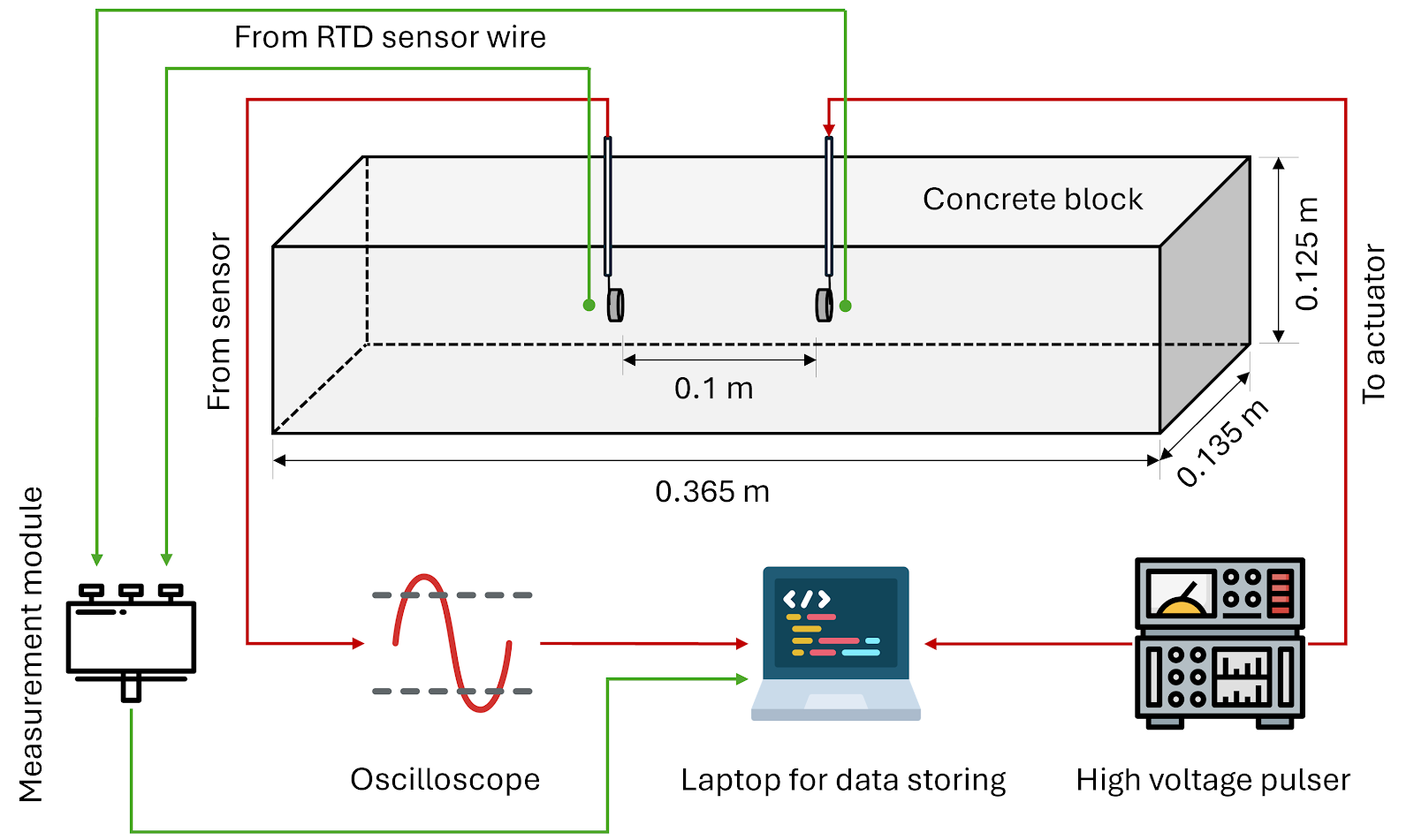Concrete Health Monitoring: A New, Simplified Approach to SHM Analysis
Hello. Hallo. Ciao.
In my previous blog [First secondment at ISAMGEO, Italy], I talked about my PhD research topic and the opportunity to learn new skills through the secondment and industrial pieces of training. Now, I'm excited to share the progress of my research, which I recently presented at the ISMA 2024 Conference in Leuven, Belgium. The core of this research focuses on enhancing structural health monitoring (SHM) for concrete infrastructure—a critical area to ensure the safety and longevity of structures, especially amid changing environmental conditions.
The Challenge of Environmental Compensation in SHM
Structural health monitoring (SHM) systems play a crucial role in detecting damage in structures by using embedded sensors that continuously track changes in material conditions. However, these sensors are highly sensitive to environmental conditions, particularly temperature variations, which can lead to misinterpretations or “false-positive” damage alerts. For concrete infrastructure, maintaining accuracy in SHM becomes complex when temperature changes affect the readings of ultrasonic signals in the sensors. To address this, my study compares two techniques for compensating for temperature effects in SHM: time-stretching and Moving Window Cross Spectrum (MWCS) methods.
The Experimental Approach
Our experimental setup included two concrete blocks subjected to varying temperatures in a controlled climate chamber at Université Libre de Bruxelles (ULB). Each block was embedded with piezoelectric transducers, sensors that generate and capture ultrasonic signals within the concrete. By adjusting temperature settings and recording the resulting ultrasonic signals, we observed how temperature impacts these readings and, in turn, the structural integrity assessment.
The two primary methods compared in this research are:
1. Time-Stretching: A commonly used technique in coda wave interferometry, time-stretching adjusts the time axis of signals based on a calculated stretching factor. This method, while effective, assumes that temperature changes impact the entire signal uniformly, which may not always hold true.
2. Phase Adjustment via MWCS: Adapted from geophysics, this method uses a frequency-dependent phase correction to adjust for temperature-induced phase shifts in the ultrasonic signals. By only focusing on a specific frequency band, this technique aims to provide more precise adjustments.
Findings and Analysis
The analysis showed that both methods reduced the effect of temperature on damage indicators (DIs) in the concrete blocks. However, phase adjustment consistently outperformed time-stretching, particularly in terms of computational efficiency. This increased efficiency makes phase adjustment a promising candidate for real-time applications in SHM systems. Interestingly, despite using the same concrete mix, the two blocks showed different sensitivities to temperature changes, highlighting the variability in material response and the importance of adaptive monitoring techniques.
The damage indicators used in our analysis included the integrated coherence (IC) and the decorrelation coefficient (DC), which measure the correlation between baseline and adjusted signals. The phase adjustment technique reduced DC by up to 50% in one of the blocks, significantly enhancing temperature compensation. Moreover, phase adjustment was found to be 3 to 4 times faster than time-stretching, which is essential for practical, scalable SHM systems.
Towards Future Research
This research opens new avenues for refining temperature compensation methods in SHM. Future work will focus on improving parameter selection, such as time windows and frequency ranges, for more effective temperature filtering. We also aim to test these methods on damaged specimens to evaluate how well these temperature compensation techniques perform under real-world structural changes.
This study reflects a collaborative effort within the USES2 project, funded by the European Union’s Horizon 2020 program. By exploring innovative methods to enhance SHM accuracy and efficiency, we are moving closer to resilient and safer infrastructure across Europe and beyond.
You can find this research in ISMA 2024 proceedings below:
Kumar Sharma, J., and Deraemaeker, A., 'Comparative analysis of time-stretching and MWCS techniques for compensation of environmental effects in structural health monitoring of concrete infrastructure', Université Libre de Bruxelles. https://past.isma-isaac.be/isma2024/proceedings/program/
Thank you very much for your time. I am always open to discuss and collaboration.
See you soon.


Comments
Post a Comment